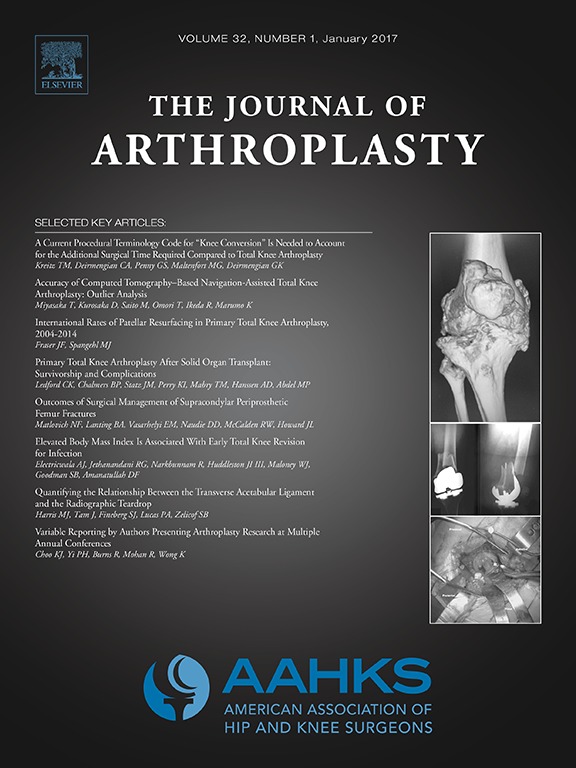
Arthroplasty
Multimodal analgesia is safer and more effective than PCA after minimally-invasive TKA
J Arthroplasty. 2014 Feb;29(2):329-34. doi: 10.1016/j.arth.2013.06.005. Epub 2013 Jul 11.Thirty-six patients undergoing minimally-invasive total knee arthroplasty (TKA) desiring rapid recovery were randomized to follow either a multimodal analgesic protocol or patient-controlled analgesia (PCA) regimen, to compare the efficacy and safety of the two approaches. Results indicated that the use of a multimodal analgesic regimen led to significantly improved postoperative pain relief and patient satisfaction, decreased narcotic consumption and narcotic-related adverse events, and decreased time to achieve physical therapy milestones within the first 3 postoperative days, compared to patient-controlled analgesia (PCA) parenteral narcotics. These significant differences persisted at the 3-week postoperative assessment, but not at 6 weeks post-TKA.
Unlock the full article
Get unlimited access to OrthoEvidence with a free trial
Start TrialCritical appraisals of the latest, high-impact randomized controlled trials and systematic reviews in orthopaedics
Access to OrthoEvidence podcast content, including collaborations with the Journal of Bone and Joint Surgery, interviews with internationally recognized surgeons, and roundtable discussions on orthopaedic news and topics
Subscription to The Pulse, a twice-weekly evidence-based newsletter designed to help you make better clinical decisions
Exclusive access to original content articles, including in-house systematic reviews, and articles on health research methods and hot orthopaedic topics
Or continue reading this full article
Register Now

Subscribe to "The Pulse"
Evidence-Based Orthopaedics direct to your inbox.




































